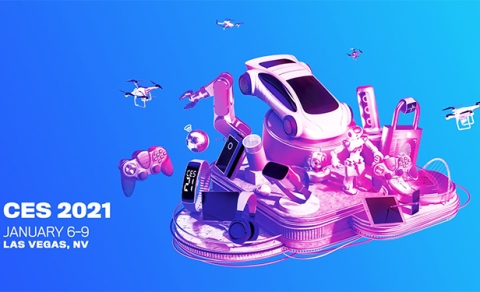What To Expect at the First-Ever Virtual CES

Consumer Technology Association President Gary Shapiro’s wife is a doctor. In February 2020, she went in front of the organization’s board of directors and warned that the coronavirus would be nothing like anything we’ve experienced in our lifetime. At that moment, Shapiro knew that the next Consumer Electronics Show would be drastically different. “Everything she said turned out to be true,” Shapiro recalled on a video call on Microsoft Teams, among the suite of tools powering CES 2021, taking place Jan. 11-14.
That knowledge allowed for nearly a year’s worth of preparing for an all-digital show. Shapiro has no pretense that the experience will match what is accustomed to at arguably the world’s most celebrated technology showcase. Perhaps the biggest concern is that the show goes on without a hitch, given the high numbers and strain placed on internet infrastructure.
It’s hard to believe that this time last year, attendees from across the world were in Las Vegas for CES. Less unlikely is that the in-person experience returns at CES 2022. In between is a virtual show with no comparison—one that TSNN talked about with Shapiro to get a sneak peek.
What sort of numbers are you expecting for CES virtual?
We’re already over six figures in terms of registration. Over 40% of those are global, which is more than our normal percentages are. We have a guesstimate of 150,000 people, which is comparable to where our shows have been. We have over 1,000 exhibitors, approaching 2,000 when the pipeline comes in. We’re probably tapped out then because we don’t have the ability to deal with any more.
How are you trying to manage attendance and maintain bandwidth to keep the show going smoothly?
The difference between global or international trade shows in the physical and digital format is that when you're attending a physical trade show, you get your plane tickets, your hotel reservations and you register, so you do things ahead of time. What's happened in the digital format, based on experience I've heard from others, is that people tend to register at the last minute. That concerns us greatly, which is why we tiered our pricing up. It goes up to almost $500 if you register at the end.
What metrics are you going to rely on for evaluating this year’s show?
Obviously, the number of people that register and how long they stay. I’m trying to find out how much we can measure the actual engagement. We’re surveying afterward—we always do a lot of surveys post-show. We don’t have to ask a lot of questions we usually ask like, “how is the transportation and signage?” We’ll divide survey results by categories—media, exhibitors, attendees and by countries.
How has the programming been adapted for an all-virtual experience?
We have such a well-recognized brand for quality of production at the physical event that we want to maintain the value of our brand. On the other hand, we don’t want to over-promise. The truth is you’re going to be in front of a screen – we can't recreate the excitement of Las Vegas, the gambling, the food, the shows, the lights, the buzz and physically seeing people. But we did try to accommodate for that with investment in the production quality, and most of the sessions will be 30 minutes rather than an hour.
The exhibitors are investing in their own video presentations and have chat capability. What makes it unique is that we’re trying to add value to the experience by keeping it live for 30 days in the sense you can communicate with exhibitors. And we’ve created our own little LinkedIn for attendees, which is something we’ve always wanted to do.
Did you think about delaying CES to keep it in-person?
There was a brief flirtation for two minutes as to whether we could possibly move it back. We were thinking more about the Spring. A lot of groups have done that, and then kept delaying and delaying, so they didn't really move forward. We wanted to move forward and that January timeframe is important to a lot of people. The worst thing was not to go purely digital, it was to delay and cancel the event in November or December because you have all your costs sunk and no revenue. By June, we were pretty much down to digital-only and announced that to the world in July.
What are your impressions of virtual trade shows produced during the pandemic?
We are kidding ourselves if we think we’re doing it right digitally as an industry. We’re not. A lot of the platforms are just not working. The return for exhibitors is just not there. Some of that is just missing the human connection but some of it is the platform themselves. So, we felt we had to break away and invest. We looked at the model of some corporate events, especially in the tech world, who are doing it right. Microsoft is one of those. They have the cloud, cybersecurity and they offer Microsoft Teams, which we are using now.
Are you already looking ahead to a more traditional CES next year?
We wanted to make sure we’re staying in the minds and budgets of our customers for early 2022. We’ve laid out floor plans and started listing exhibitors, and we’ve gotten a huge response to that. We’re calling the 2022 event a hybrid event—hopefully, we're in a position to do that. I think we will, based on the vaccines, which is the best news ever. The other good news is we’ll have a brand-new building [at the expanded Las Vegas Convention Center] and maybe another Boring tunnel. We've pretty much sold it out already.
Don’t miss any event-related news: Sign up for our weekly e-newsletter HERE and engage with us on Twitter, Facebook, LinkedIn and Instagram!


Add new comment